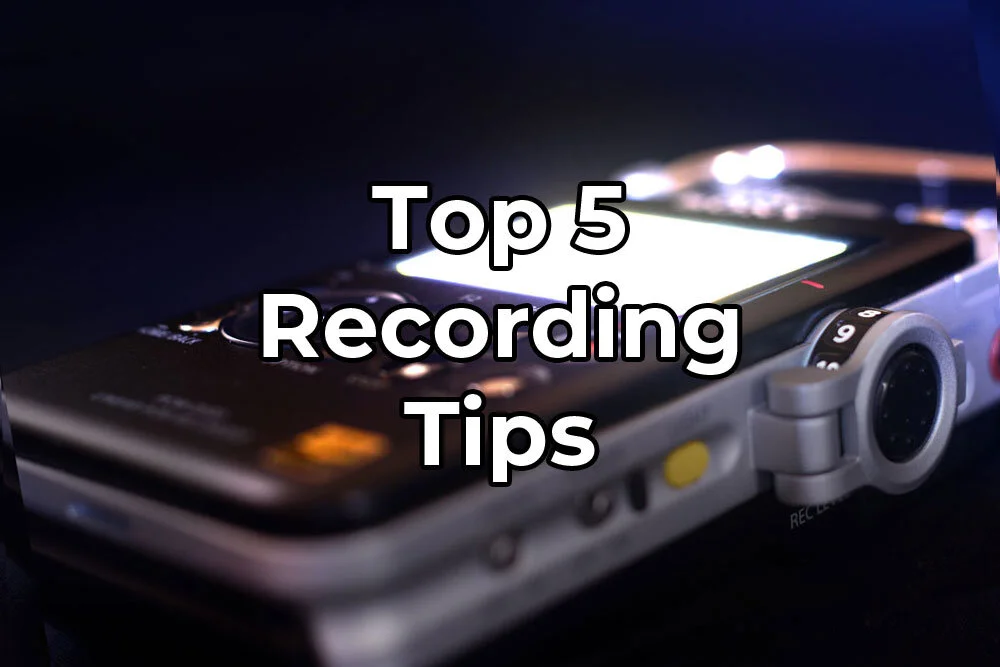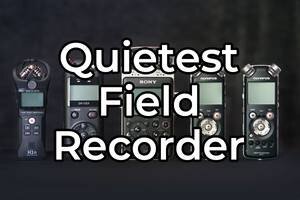Top 5 Field Recording Techniques for Better Soundscapes
Set yourself up for success by following these field recording tips and tricks.
Recording amazing nature sounds requires more than just gear. While tripods, wind protection and low-noise microphones certainly help, they are nothing without technique. I learned the following techniques by spending hours in the field and finding what worked best for me.
1. Plan
Planning is an essential part of field recording. Without a proper plan, you can be left in the field cold, wet and frustrated; and, more importantly, without any usable recordings. There are many things to think about when planning a field recording trip, but here are the big three:
What do I want to record?
What will the weather be like?
What time of day should I go?
Sometimes, the answer to one question will answer the others. For example, if you want to record rain sounds, you need to research weather forecasts for your desired location. No rain = no rain sounds. For the time of day, you need to be there during the predicted rainstorm. Okay, that was an easy example, but sometimes these questions require more thought.
Lets say that you want to record singing bird sounds. To maximize chances for clear and crisp sounds of birds, you want to select a wind-free day. Wind can increase the background noise-floor-level and obscure your subject’s sounds. Check the weather in advance and make sure wind speeds are 4 mph or less.
As for the time of day, birds sing throughout the day but are especially loud and active during dawn. This is an added bonus. Early morning is a great time to record because most people are still sleeping.
Less humans awake = quieter soundscapes = better recordings ☺
2. Listen
Before you set your equipment up, take a moment to observe your surrounds. It can be tempting to hit that record button right away, but this extra effort is worth it. Close your eyes and take note mentally of everything you hear. The leaves rustling in the wind; a babbling brook in the distance; talking trees as their limbs rub together. As you sit in silence, notice how the landscape comes alive with sound.
By mentally plotting the location of these sounds, you can best decide where to put your microphones and how to orient them. If your recording gear simulates a human head, you can use your head (and ears) to find the perfect placement.
With eyes still closed, look left and right, and up and down until the soundscape is the most pleasing. This is where you want to put your microphones.
This technique will help set your creativity free and allow you to capture more interesting and more diverse soundscapes. What would have been just a close-up recording of a stream becomes a diverse and inspiring sonic landscape. Now there’s rustling leaves in the left-ear, brushing grasses in the right-ear, the stream in the distant center and birds overhead. All because you stopped to listen.
To summarize:
Spend 5 minutes in silent observation
Make mental note of observed sounds
Determine position/orientation of mics that maximizes diversity
Record and enjoy!
3. How to Fine-tune Microphone Balance
By following the above advice, your mic placement will be pretty good, but not perfect. Being off by just one or two degrees can ruin the balance of an entire recording. This 2-step tip will save you the frustration of getting home and realizing that you should have fine-tuned your mics.
Use headphones to isolate your recording from ambient noise
Adjust microphones for perfect balance
After you’ve set up your equipment, plug in a pair of headphones to your recording device. This will allow you to hear what your microphones are recording. It is important to use headphones that prevent environmental noise from leaking in. This is called “isolation.” If you can still hear the ambient environment through your headphones, it is very difficult to fine-tune your placement.
For this reason, I use a pair of earbuds with “gummy” or “marshmallow” tips. This creates a physical seal between my ear canal and surroundings. Once you have isolated your soundscape audio from the ambient environment, it is very easy to make small tweaks to your mics to achieve perfect balance.
RELATED: Best Headphones for Field Recording
4. Don’t Chase Sounds
Sometimes you will do the research, observations and fine-tuning, but as soon as you start recording, you think about changing spots. Maybe the wind starts, a new bird begins calling, or a fish jumps and you just have to record it.
Do not be tempted! After you break down your gear and get set up again, you will have disturbed those species and they won’t be in the same location. Then, as you sit there, you hear a new sound, just a little over there, that you simply must have; and the cycle repeats.
Save yourself from recording 5 minute shorts of you running around and commit to your original plan. The time you spent in preparation was worth it. Your microphones will still capture the changing winds, that new bird and even that jumping fish (probably), and then you’ll have a nice, long recording to show all your friends.
5. Practice, Practice, Practice
Its been said a million times before, but there is no substitute for practice. If you only take away one thing from this post, let it be this. The more you get in the field and record, the better your recordings will become.
By practicing, you find what works, and what doesn’t work, for you. Through hands-on experience, you will refine your skills and develop new ones that will contribute to your unique style.
The next time you go out, bring these techniques with you and see how they work! Thank you so much for reading! Please let me know in the comments what techniques you use, I would love to learn from you!
Support Acoustic Nature
If you enjoyed this post and would like to help support Acoustic Nature, please consider "buying me a coffee" or becoming a Patreon with the buttons below.
As a thank you for your support, Patreon supporters receive a copy of Field Recording For Beginners, exclusive access to the full Behind The Sounds video series, nature sound library downloads, and more.
If you are unable to support the site financially, please share this post with others, or leave a comment below letting me know you enjoyed this post! Both are free and help the website grow. Thank you ♫
Thanks for reading,
-Jared














